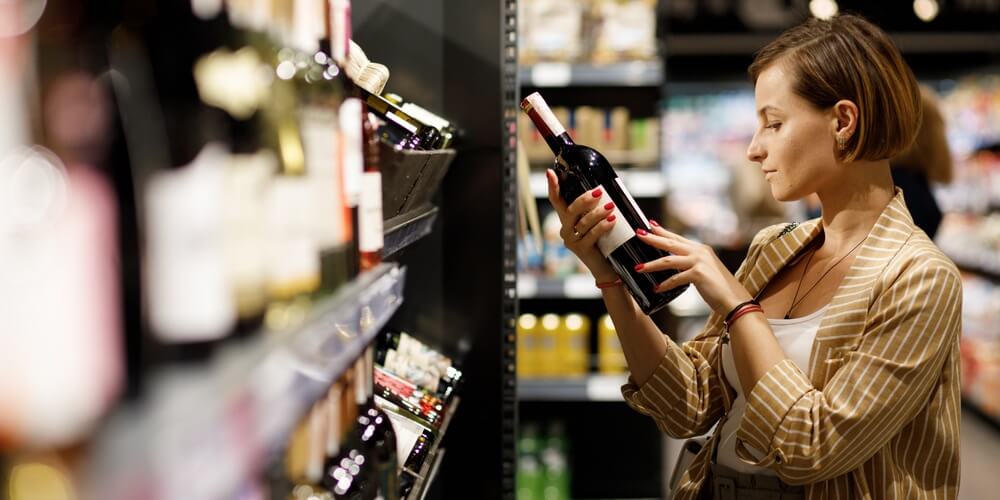PRIME+ Selling System Blog

The Beverage Industry Landscape and Changes
Like many other sectors, the alcohol beverage industry is facing many challenges. The ripple effects of the pandemic have created supply chain hurdles. Logistics issues include shipping delays, lack of capacity in shipping containers, and transport interruptions.
Aside from the supply chain obstacles, there is pressure to meet consumer needs. Months of quarantine saw a rash of bar closures and a surge in at-home drinking. With the focus on health and wellness, others looked for non-alcoholic options for their favorite alcoholic beverages. These and other trends are spurring change in the alcohol beverage industry.
Premiumization
Another side effect of pandemic restrictions, quarantine, and closures is the desire for quality when it comes to the consumer's drink of choice. Millennials are willing to pay more for premium beverages. They feel the savings of drinking at home rather than going out justify spending more. This trend has been around for a while in wines but has now extended to beer and spirits, as well.
Since people couldn't enjoy the social aspect during the height of the Covid crisis, they were willing to indulge. The market share of premium or "super-premium" alcoholic drinks is expected to grow to 13% by 2024, though 40% of consumers say they invest in luxury brands of alcoholic beverages occasionally.
Ready-To-Drink
The ready-to-drink or RTD category has grown 171% over the past year, making it one of the fastest-growing spirits categories. Though they are not new, the earlier versions of RTD cocktails offered convenience but were somewhat lacking, falling short compared to traditional mixology. Innovation and higher consumer expectations have led to a renaissance in ready-to-drink options that hold their own against the classic drinks.
Canned cocktails are pushing their way into the craft beer and hard seltzer space. In 2020, Bombay Sapphire released a line of canned gin and tonics. Tequila Cazadores has also launched a line of pre-mixed margaritas, spicy margaritas, and palomas, while other brands have introduced more innovative RTD cocktails. Tia Maria released their iced coffee frappe, and wine brand Decoy released wine-based seltzers.
Environmentally Sustainable Wines
Environmental sustainability has been a focus of many vintners for quite a while. However, until recently, that wasn't driven by demand. Though natural wines aren't anything new, the environment is taking a leading role in mass-consumer wine purchases. The increasing desire for sustainability in all things combined with a more health-conscious public means that wine lovers in all budget categories have incorporated responsibly made wines into their drinking habits as an extension of and commitment to their values and principles.
Sustainable wine isn't necessarily organic wine, though organic wines may also be made using sustainable methods. Many certifications seek to improve the winemaking process, and they vary depending upon the region or principles being upheld. The most common of these certifications are:
- Biodynamic - A holistic approach to the health of agriculture.
- Organic - A process that protects biodiversity and ecological balance while using unadulterated ingredients.
- Sustainable - A winemaking method that conserves natural resources and reduces water and power consumption, extending even to packaging.
Sustainable winemaking leverages old-world techniques to make contemporary wines in a way that supports social responsibility and protects the environment. These principles are applied throughout the winemaking process, from how the grapes are grown to harvest and fermentation techniques. It includes planning and planting vineyards, a concentration on crop biodiversity, fertilization, irrigation, and winemaking standards. Some believe that wines made under these standards are a perfect complement to food as they aid digestion and help the body absorb the antioxidants in the wine.
The Alcohol Beverage Industry Embraces Opportunity Despite the Challenges
The alcohol beverage industry was impacted during the pandemic like many others. However, there are also opportunities. We are seeing that vintners, brewers, and distillers have their fingers on the pulse of consumers. As a result, they are embracing quality, innovation, and sustainability in their products.
We still have hurdles to clear as the supply chain recovers. However, the situation has also created a desire for quality over quantity and a concern for personal and environmental health over economy or convenience, and that is where the BevAlc industry can embrace opportunities while answering consumer demand.
To learn more about the emerging landscape, Fox Selling System invites you to download Industry Timeline & Landscape: How Things Have Changed.
.png?width=820&height=312&name=learning%20evolution%20(1).png)
